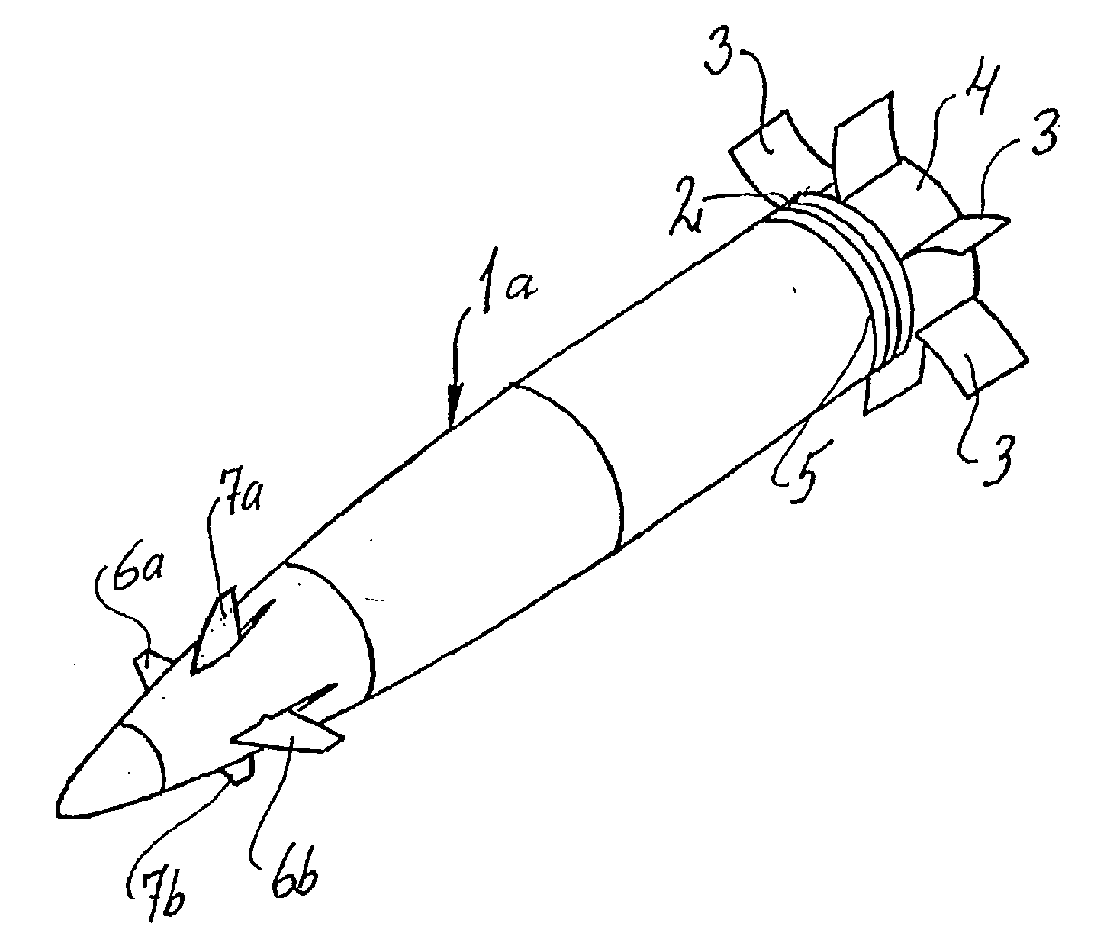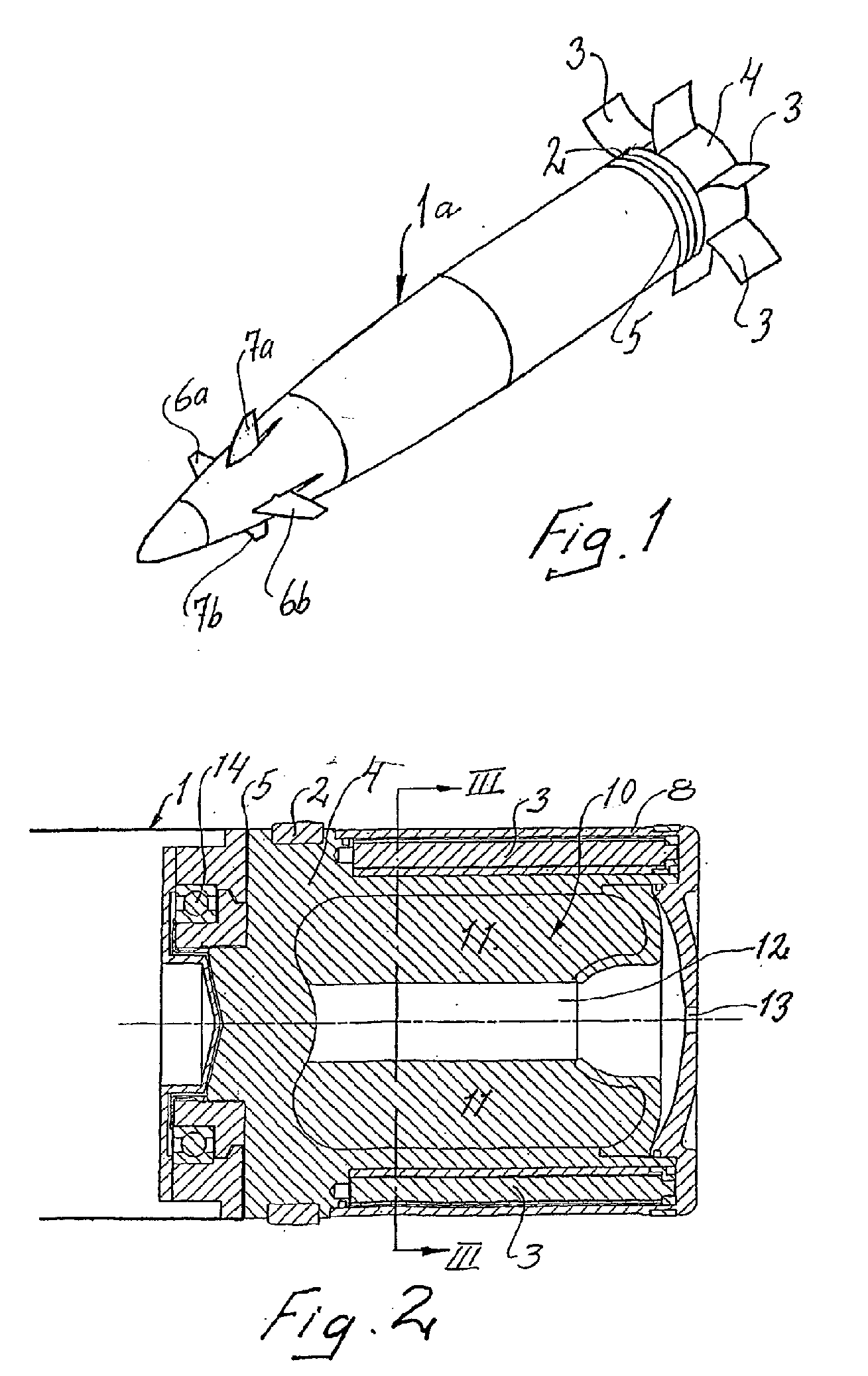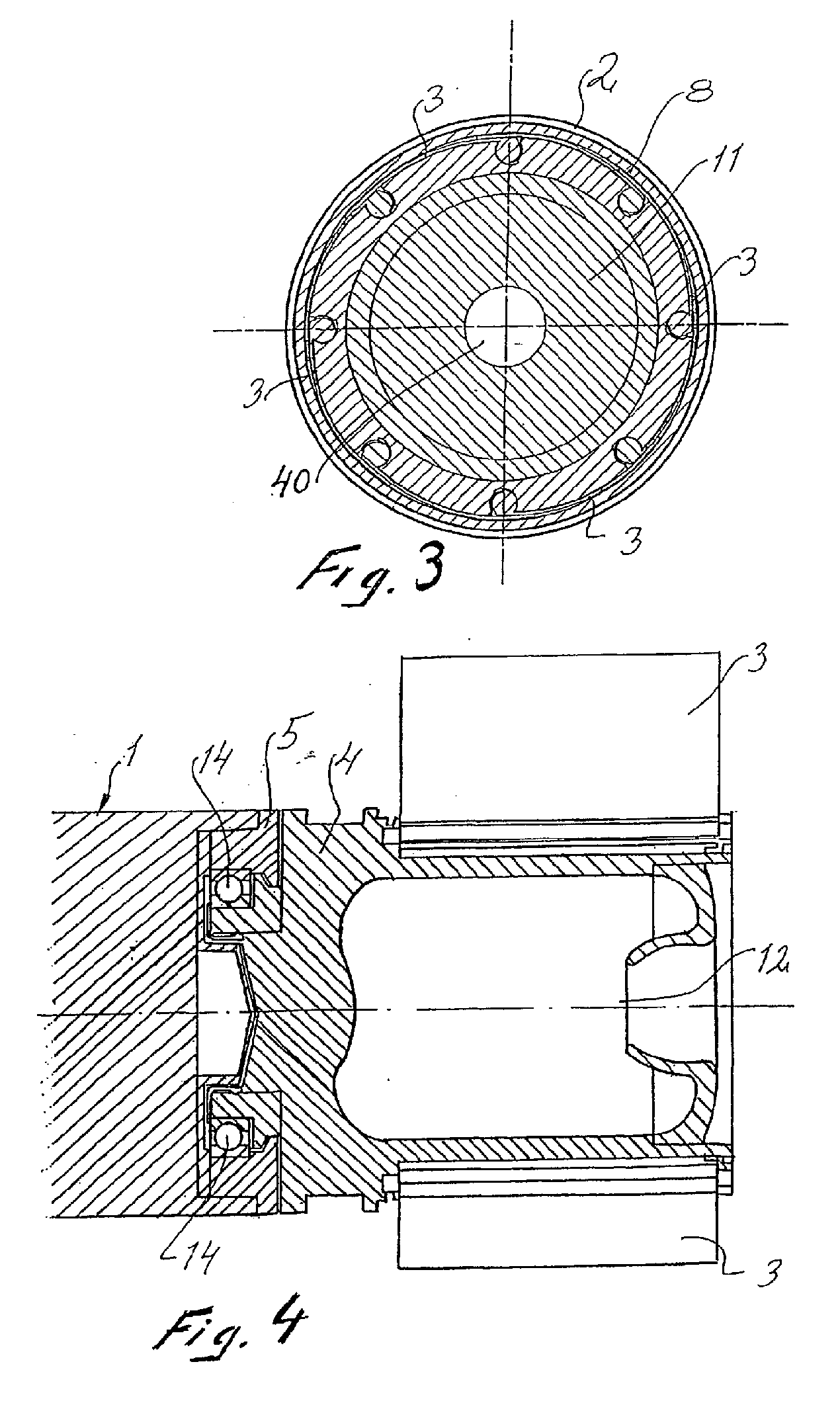Method and arrangement for low or non-rotating artillery shells
a technology of low or non-rotating artillery shells and methods, applied in the direction of weapons, projectiles, ammunition projectiles, etc., can solve the problem of not being able to provide this type of missile with a well-functioning guidance system
- Summary
- Abstract
- Description
- Claims
- Application Information
AI Technical Summary
Benefits of technology
Problems solved by technology
Method used
Image
Examples
Embodiment Construction
[0028] The missile shown in FIG. 1, in this case the shell 1a, is provided with a band track 2 for a drive band which is conventionally known as a “skidding drive band”, which is generally lost when the shell leaves the barrel in order to effect low inherent rotation or no rotation of the shell. A number of deployable fins 3 are shown fully deployed in the figure and which are fixed on a body part 4 which rotates freely relative to the rest of the shell about an axis concentric with the longitudinal axis of the shell. The dividing plane between the shell 1 and the body part 4 has been labeled 5. In addition, the shell 1 has two pairs of controllable canard fins 6a, 6b and 7a, 7b arranged on a respective quadrant axis and with which the course and trajectory of the shell can be corrected in accordance with control commands received either from an internal target seeker or from the launch site, via satellite, radar or other means. The way in which the shell receives control commands h...
PUM
 Login to View More
Login to View More Abstract
Description
Claims
Application Information
 Login to View More
Login to View More - R&D
- Intellectual Property
- Life Sciences
- Materials
- Tech Scout
- Unparalleled Data Quality
- Higher Quality Content
- 60% Fewer Hallucinations
Browse by: Latest US Patents, China's latest patents, Technical Efficacy Thesaurus, Application Domain, Technology Topic, Popular Technical Reports.
© 2025 PatSnap. All rights reserved.Legal|Privacy policy|Modern Slavery Act Transparency Statement|Sitemap|About US| Contact US: help@patsnap.com



